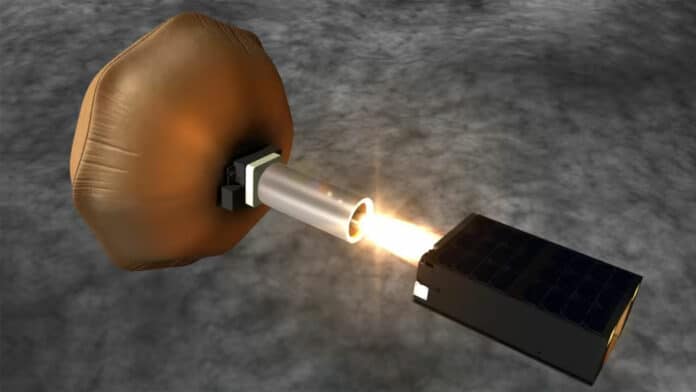Japan has abandoned efforts to land a miniature Japanese lunar lander named OMOTENASHI on the Moon, the country’s space agency said. Officials working on the spacecraft announced on Twitter that the trackers of the spacecraft failed to pick up the CubeSat’s wobbly signal in time for its planned lunar landing.
The Japan Aerospace Exploration Agency’s (JAXA) OMOTENASHI is one of ten CubeSat missions that took to the skies with the launch of NASA’s Space Launch System (SLS) for its Artemis I moon mission last week. OMOTENASHI and nine other CubeSats separated from the SLS rocket shortly after launch.
“During the ground station operation, communication with the spacecraft could not be established, and it was determined that the lunar landing maneuver (DV2) operation could not be performed,” JAXA tweeted on Monday.
The Japanese space agency hopes to redirect its spacecraft for a new mission attempt around March 2023 if it can establish better communication conditions. Before that happens, it will investigate why the little probe couldn’t be hailed in time. It will continue working to restore communications with OMOTENASHI, hoping the craft can be used to measure radiation and for other experiments.
OMOTENASHI, short for ‘Outstanding MOon exploration TEchnologies demonstrated by NAno Semi-Hard Impactor,’ was originally expected to attempt a hard landing from an altitude of 100 to 200 meters (328 to 626 feet) above the lunar surface. The spacecraft features airbags and a shock absorption system to soften the landing.
However, now OMOTENASHI is traveling through deep space. In the spring, though, JAXA says the effects of Earth’s gravity could help swing the spacecraft back to a trajectory that would favor another mission attempt. On Twitter, they wrote in Japanese that OMOTENASHI “will fly by the moon, approach the Earth once, and then escape from the Earth’s gravitational sphere.”
It all depends on whether the tiny spacecraft can draw in enough sunlight to power itself, and thankfully JAXA says it will be flying closer to the Sun in March, allowing it to pull more power from solar radiation.
